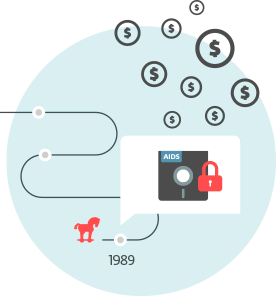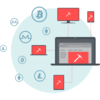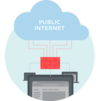Qu'est-ce qu'un ransomware ?
Ce type spécifique de logiciel malveillant est utilisé pour l'extorsion. Lorsqu'un appareil est attaqué avec succès, le logiciel malveillant bloque l'écran ou crypte les données stockées sur le disque et une demande de rançon accompagnée des détails du paiement est affichée à l'intention de la victime.
Comment reconnaître un ransomware ?
Si vous avez été attaqué, le ransomware vous informera dans la plupart des cas par les moyens suivants l'affichage d'un message de rançon sur votre écran, ou en ajoutant un fichier texte (message) aux dossiers concernés. De nombreuses familles de ransomwares modifier l'extension du fichier des fichiers cryptés.
Comment fonctionne un ransomware ?
Les opérateurs de ransomware utilisent de nombreuses techniques :
- Diskcoder ransomware crypte l'ensemble du disque et empêche l'utilisateur d'accéder au système d'exploitation.
- Casier d'écran bloque l'accès à l'écran de l'appareil.
- Crypto-ransomware crypte les données stockées sur le disque de la victime.
- Casier à code PIN cible les appareils Android et modifie leurs codes d'accès pour verrouiller leurs utilisateurs.
En savoir plus
Comment rester protégé ?
Règles de base à suivre pour éviter la perte de vos données :
- Sauvegardez vos données régulièrement - et conserver au moins une sauvegarde complète hors ligne
- Conservez tous vos logiciels – y compris les systèmes d'exploitation – patché et mis à jour
Toutefois, pour aider les utilisateurs/organisations à reconnaître, prévenir et supprimer les ransomwares, une une solution de sécurité fiable et multicouche est l'option la plus efficace.
Règles avancées principalement pour les entreprises

Bref historique
Le premier cas documenté des ransomwares étaient en 1989. Appelé le Cheval de Troie du SIDA, il a été distribué physiquement par la poste au moyen de milliers de disquettes qui prétendaient contenir une base de données interactive sur le SIDA et les facteurs de risque associés à la maladie. Lorsqu'il est déclenché, le logiciel malveillant désactivé l'accès de l'utilisateur à une grande partie du contenu du disque.
Le cheval de Troie du sida demandérançon (ou, comme la note de rançon l'appelait, "paiement de licence") des États-Unis $189 à envoyer à une boîte postale au Panama, ce qui permet à l'utilisateur d'exécuter le programme 365 fois. Le Dr Joseph Popp a été identifié comme l'auteur ; les autorités l'ont cependant déclaré mentalement inapte à être jugé.
Exemples récents
ESET vous protège contre les ransomwares
ESET Sécurité plus pour les particuliers
Protection puissante et multicouche pour crypter les données sensibles, gérer facilement les mots de passe, sécuriser les transactions en ligne, etc. Une solution conviviale pour une meilleure confidentialité en ligne. Sécurise les appareils Windows, macOS, Android et iOS.









